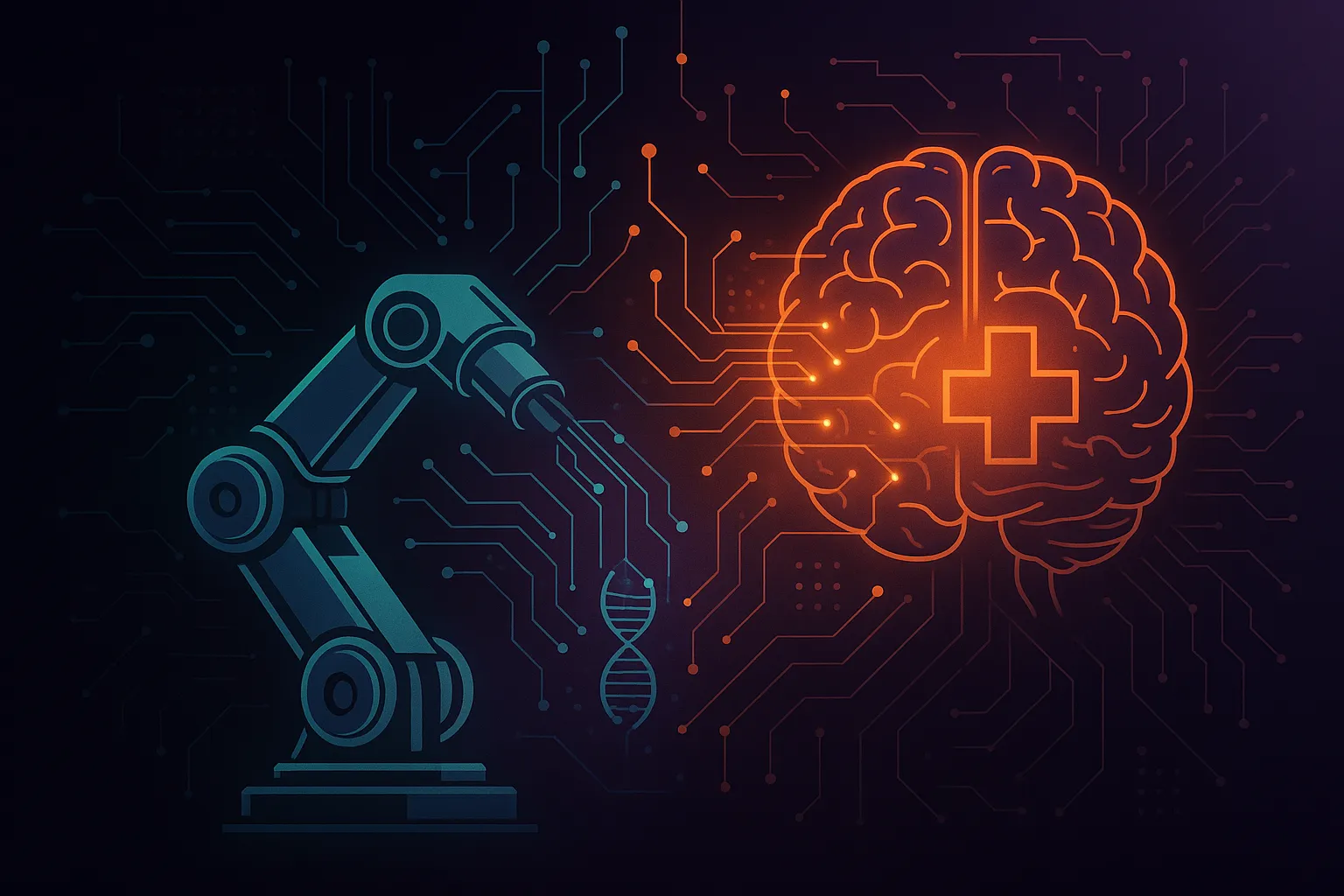Brain‑Computer Interfaces & Assistive Tech
Brain–computer interfaces (BCIs) translate neural activity into commands that control external devices. AI models—particularly classification, regression and clustering algorithms—decode patterns in electroencephalographic or intracortical recordings to interpret user intent. By harnessing these techniques, BCIs enable people with paralysis or neurodegenerative diseases to operate robotic arms, communicate via spellers and even regain partial control of their limbs through closed‑loop stimulation.
Assistive technologies built upon BCIs are advancing rapidly. Machine‑learning algorithms calibrate prosthetic hands to each user’s brain signatures, predicting finger movements and adapting over time. Exoskeletons use predictive models to anticipate gait phases, providing synchronized support for walking. Researchers combine deep learning with microelectrode arrays to decode speech from cortical activity, giving voice to those who have lost the ability to speak. These innovations illustrate the promise of AI‑enhanced assistive devices.
Beyond mobility, BCIs are being explored for cognitive enhancement and environmental control. Systems that detect attentional lapses can prompt students to refocus during learning. Smart home interfaces allow users to adjust lights or call for assistance with a thought. Ongoing trials investigate closed‑loop systems for epilepsy and depression that detect pathological activity and deliver targeted stimulation to restore normal function. Predictive analytics ensures that interventions are timely and personalised.
Ethical and practical considerations must guide deployment. Invasive recording devices pose surgical risks and raise questions about who owns neural data. Models trained on small cohorts may not generalise across gender, age or cultural groups. There is potential for cognitive exploitation if BCIs are used without informed consent or oversight. Rigorous clinical trials, transparent algorithms and equitable access are necessary to realise the benefits of BCIs and assistive tech while protecting the autonomy and dignity of users.
Back to articles
Clinical Use Cases
Artificial intelligence in neurology supports triage, risk stratification, image review and longitudinal monitoring. Typical scenarios include seizure risk alerts based on wearables, MRI change detection, cognitive screening with speech and drawing analysis, and automated reminders that nudge adherence. Each use case requires a clinical owner, a clear success metric and a safety net for unexpected outputs. By focusing on workflows that already exist, AI augments clinicians rather than adding burden.
Data Privacy & Security
Healthcare data deserves the highest level of protection. Collect only what is necessary, encrypt at rest and in transit, and keep audit logs for access. Role-based permissions ensure that the right people see the right data. De-identification and minimization reduce exposure, while consent management tools record preferences. Patients should be able to request access or deletion at any time, and those requests must be honored promptly.
Interoperability & Workflow
Great tools fit into existing systems. Standards like HL7 FHIR and SMART on FHIR enable secure data exchange. Single sign-on and context launch reduce clicks. Each feature should map to a documented step in the clinical pathway so teams do not need a new habit to get value. Start with lightweight pilots, gather feedback, and iterate quickly to remove friction.
Model Quality & Monitoring
Models drift as populations, devices and documentation styles change. Measure calibration, sensitivity and specificity on a rolling basis and set alert thresholds. Provide clinicians with simple explanations, confidence ranges and alternative actions. A rapid rollback path is essential for safety—if performance dips below a threshold, the system should reduce autonomy or pause recommendations until retrained.
Outcomes & Ethics
Track outcomes that matter: time to diagnosis, avoided hospital days, patient-reported quality of life, and equity across subgroups. Document limitations and known failure modes so clinicians understand when to rely on the system and when to override it. Communicate transparently with patients about how AI participates in their care and how data is protected.
